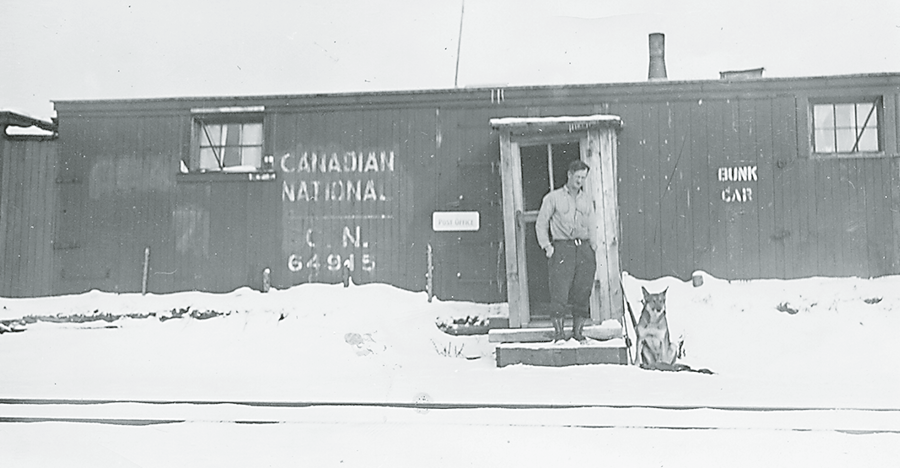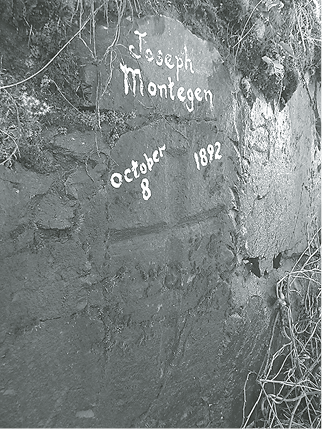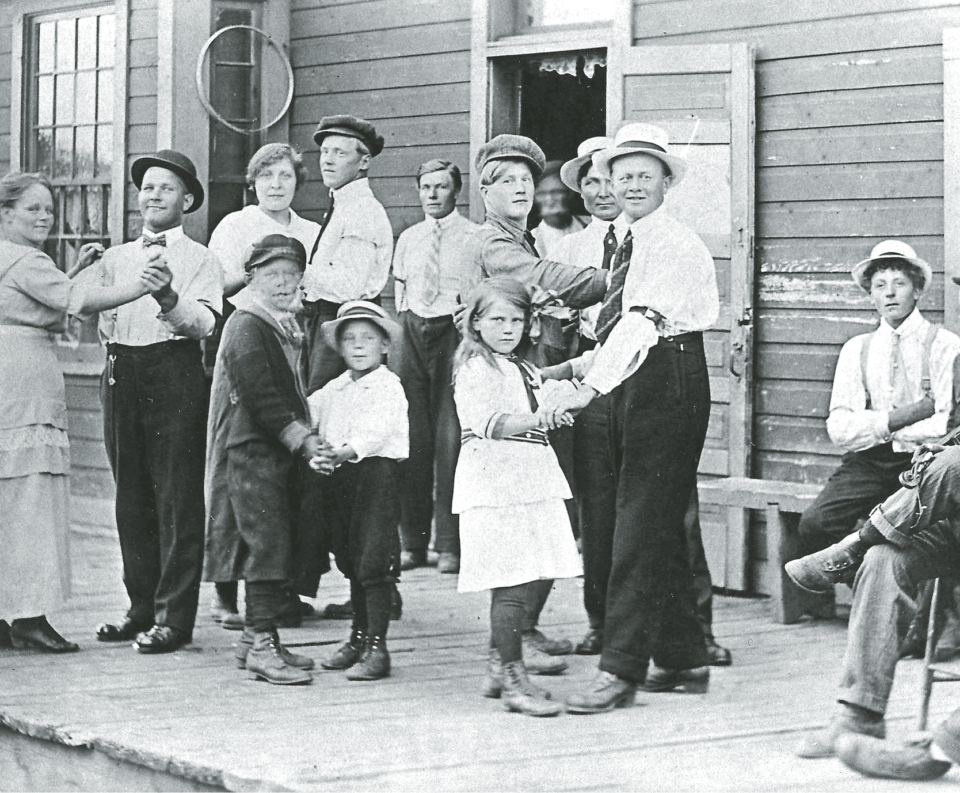Life on the Line
First, you would hear the long, high pitched bellow in the distance. Then, you would see it cutting through rock and forest like a black tornado. Then the earth would rumble under your feet. It was your connection to the rest of the world. It was your only break from the isolation in the wilderness. It was the train. The development of the railways opened up the countries, but it also had a huge effect in building communities in many little ways. From day-to-day living, to education and medical needs, to social connections, the railways delivered it all.
Steam engines needed two key elements to operate: fire and water. The tracks needed to be in good working order, and information needed to be relayed along the line. To accommodate all of these needs, water and coal stations, telegraph operators, and section crews were placed along the stretches of track, resulting in micro communities. Every 7 to 10 miles was a siding, a place where the train could pull off the main track. Most sidings had a train station, and a few houses to accommodate the families of the crews who maintained the tracks and worked at the station. Coal and water stations where placed less frequently, only when needed depending on the amount of energy used.
The Canadian Pacific Railway began to lay tracks in Northwestern Ontario in 1875. Next, the Port Arthur, Duluth and Western Railway began in 1883. The turn of the century saw the construction of the National Transcontinental Railway, the Grand Trunk Pacific Railway, the Ontario and Rainy River Railway, and the Canadian Northern Ontario Railway. All of the Railways mentioned, except for the Canadian Pacific Railway, became part of the Canadian National Railway system starting in 1923. But the peak of the industry, in relation to the culture and communities, was in the 1920s and 1930s.

The coming and going of the trains had an impact on everyone in the small communities and in between. Early on, the railroad was used to communicate forthcoming weather conditions by placing weather discs on the side of a rail car. Farmers, especially, appreciated the innovative effort. A disc in the shape of a circle indicated sunny weather, a half moon shape showed showers, and a star indicated rain. The practice began in the 1890s, but by 1901, it was no longer in use. No one took responsibility for changing the discs, so the information was unreliable. Laundry day, too, was impacted by the train. One had to be aware of the train schedule and wind direction so as not to let clean clothes, drying on the line, get covered in black smoke from the puffing engines.
The train station was the hub of the community. There, telegraph operators not only communicated with the company but residents could also get messages relayed to friends and family. One account describes how two small Northwestern Ontario communities were unable to get their curling teams to meet up for a tournament due to weather, so each team played their games at home and the telegraph operators in each community relayed the progress and scores of the game. The deck of the train station was also a meeting place. Sometimes people would just sit and wait at the station just to see who came off and on the train. The platform was even used for social events, such as dances, as community halls were few and far between. However, not all sidings had a station; so railway cars were used as bunkhouses, kitchens, the post office, schools, and offices for visiting doctors and dentists.

People in the communities were vulnerable as they were almost completely reliant of the trains. Washouts and accidents could delay or destroy supplies. In 1950, the Canadian National Railway workers went on strike for better hours, from 48 hours per week to 40 hours per week; and wages, from 7 cents per hour to 10 cents per hour. As a result of the strike, the town of Atikokan, west of Thunder Bay, was cut off from receiving its regular shipments of food and medical supplies. Some days later, the company sent in the ‘Mercy Train’ to bring in food and necessities to the community during the strike.
However, sometimes, the trains offered more than they intended. In 1974, A Canadian National Railway train was travelling from Ottawa to Regina with a car load of freshly minted nickels. At some point before Hillsport and all the way to Nakina, northeast of Thunder Bay, some of the bags of nickels had ripped open and the nickels began spilling onto the tracks. The communities along the way quickly found out about the windfall and people were busy filling their pockets with nickels. A total of $25,000 was lost. For some time afterwards, residents of the communities were purchasing items with handfuls of nickels.
This culture, specific to the railways, reigned for about 50 years until it started to decline. Three main factors contributed to the end of the railway’s community connection and culture. First, Canadian Prime Minister R. B. Bennet began make-work projects for unemployed men during the depression of the 1930s. One of the many projects was the construction of highways, so the railway was no longer the only way to travel or to get supplies. The second blow was to the steam engine as diesel engines were introduced in the 1950s. As a result, the need for frequent stops for water and coal was eliminated. The third factor was the end of written orders, which were delivered by hand until the 1970s, when they were replaced by fax and radio. Now, signals and switches are remotely controlled through the Centralized Traffic Control system.

But the legacy of the cultural icon of the railways is still all around us, sometimes hidden in plain sight. Cinders, for example, the spent coal from the engines, can still be found in many of the school yards developed for the baby boom years. Another hold out is the language. Ever get side tracked or offer someone Brownie points for a good deed? Brownie points, short for Brown’s System of Discipline, was the brainchild of G.R. Brown for the New York Central Railway. Brownie points were awarded to employees for being neat in appearance, helpful and orderly, or taken away for infractions. The system was then adopted by all the railways. Other legacies can be found beside the tracks as grave markers or even carved in stone. For example, a memorial cross is carved in a rock-cut along the Port Arthur, Duluth and Western Railway. Joseph Montegia (misspelled by someone who painted on the rock) is the only person to die while working on that line. In 1892, Giuseppe (Joseph) Montegia was killed during the blasting of the rocks. The cross was etched at a height where passengers of the train would see it as they passed through the rock cut.
Even though the railway ruled for a relatively short time, the history and culture still holds intrigue and interest in this modern, digital, fast-paced world.




